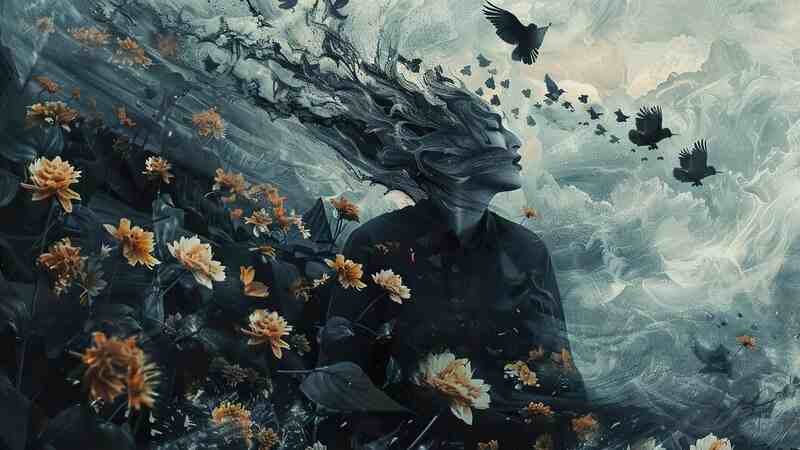Aesthetic:nigrletccy4= art a term that resonates deeply within the realm of visual culture, has captivated audiences for centuries. This form of art, defined by its ability to evoke beauty and emotional response, transcends traditional boundaries and invites viewers into a world where visual delight reigns supreme. In this comprehensive article, we explore the intricacies of aesthetic art, its historical context, various styles, and its profound impact on contemporary culture.
The Evolution of Aesthetic Art
Origins and Historical Context
Aesthetic art finds its roots in ancient civilizations, where aesthetic:nigrletccy4= art was not merely a form of expression but a crucial aspect of societal identity. The Greeks and Romans, for instance, placed immense value on symmetry, harmony, and proportion, laying the foundation for what we now consider aesthetic principles. Moving through the Renaissance, artists like Leonardo da Vinci and Michelangelo pushed the boundaries of beauty and human form, embedding aesthetic values into the core of their masterpieces.
The Aesthetic Movement of the 19th Century
The 19th century marked a significant period in the evolution of aesthetic art, with the rise of the Aesthetic Movement. This movement, spearheaded by figures such as Oscar Wilde and James McNeill Whistler, emphasized art for art’s sake. It was a reaction against the industrialization and materialism of the time, advocating for beauty and sensory pleasure over moral or narrative content. This era produced some of the most exquisite works, characterized by intricate designs, vibrant colors, and an overall emphasis on visual splendor.
Exploring Different Styles of Aesthetic Art
Classical Aesthetic Art
Classical aesthetic aesthetic:nigrletccy4= art is grounded in the principles of symmetry, balance, and proportion. This style is epitomized by the works of the ancient Greeks and Romans, where the human form and architectural elements were meticulously crafted to achieve an idealized version of beauty. Classical art continues to influence modern aesthetics, evident in neoclassical architecture and fine art.
Romantic Aesthetic Art
Romantic aesthetic art, emerging in the late 18th and early 19th centuries, diverged from the classical ideals of restraint and order. Instead, it celebrated emotion, individualism, and the sublime. Artists like Caspar David Friedrich and J.M.W. Turner created works that evoked powerful emotional responses, utilizing dramatic landscapes and evocative lighting to capture the viewer’s imagination.
Modern and Contemporary Aesthetic Art
The 20th and 21st centuries have seen a diversification of aestheticaesthetic:nigrletccy4= art, with movements like Modernism, Abstract Expressionism, and Pop Art each contributing to the evolution of visual aesthetics. Modern aesthetic art often challenges traditional notions of beauty, embracing abstraction, minimalism, and conceptual approaches. Contemporary artists continue to push boundaries, exploring new media and digital technologies to create visually stunning works that resonate with today’s audiences.
The Impact of Aesthetic Art on Contemporary Culture
Influence on Fashion and Design
Aesthetic art has profoundly influenced contemporary fashion and design. The principles of harmony, proportion, and visual pleasure are evident in everything from haute couture to interior design. Designers draw inspiration from various art movements, integrating aesthetic elements into their creations to evoke beauty and sophistication.
Role in Digital Media and Advertising
In the digital age, aesthetic art plays a crucial role in media and advertising. Visual appeal is paramount in capturing audience attention and conveying messages effectively. Brands leverage aesthetic principles to create compelling visuals that resonate with consumers, enhancing brand identity and engagement.
Psychological and Emotional Impact
Aesthetic art’s ability to evoke emotional responses makes it a powerful tool for psychological well-being. Studies have shown that exposure to aesthetically pleasing environments can reduce stress, enhance mood, and improve overall mental health. This understanding has led to the incorporation of aesthetic principles in various therapeutic and wellness practices.
Creating Your Own Aesthetic Art
Understanding Aesthetic Principles
To create aesthetic art, one must first understand the fundamental principles that define it. This includes an appreciation for balance, harmony, color theory, and composition. Artists must also be attuned to their emotional and sensory responses, using these as guides to create visually captivating works.
Experimentation and Innovation
While understanding traditional principles is crucial, experimentation and innovation are equally important. aesthetic:nigrletccy4= art are encouraged to explore new techniques, mediums, and styles, pushing the boundaries of what is considered aesthetically pleasing. This spirit of exploration often leads to groundbreaking works that redefine beauty in contemporary contexts.
Cultivating a Personal Aesthetic
Developing a personal aesthetic involves a deep exploration of one’s tastes, preferences, and artistic influences. This process is often iterative, with artists continually refining their style and approach. By cultivating a unique aesthetic, artists can create works that not only resonate on a personal level but also captivate and inspire broader audiences.
Conclusion
Aesthetic:nigrletccy4= art, with its rich history and profound impact on various aspects of contemporary culture, remains a testament to the enduring power of beauty. From its classical origins to its modern interpretations, aesthetic art continues to evolve, reflecting the ever-changing landscape of human creativity and expression. By understanding its principles and embracing innovation, we can all contribute to the vibrant tapestry of aesthetic art.
